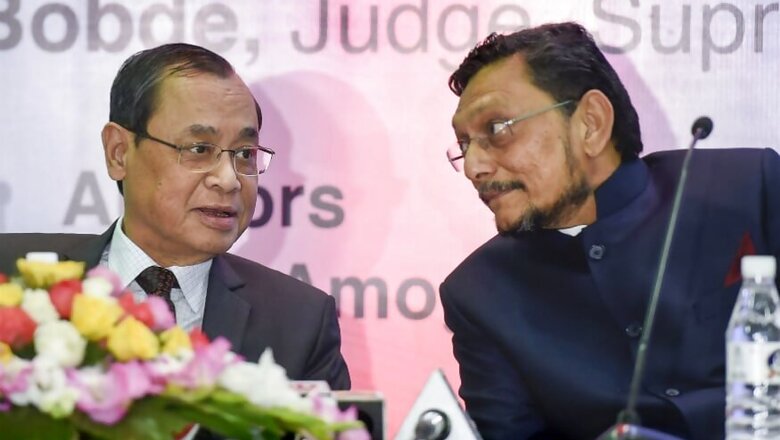
views
New Delhi: A five-judge Constitution bench of the Supreme Court, headed by Chief Justice of India (CJI) Ranjan Gogoi, on Saturday pronounced a unanimous verdict in the historic Ayodhya land dispute case. The judgment came a week before Gogoi, on November 17, demits office and passes on the office to Justice SA Bobde.
The Supreme Court ruled that the dispute area, comprising 2.77 acres, will be handed over to Hindu parties, with a trust to be formed by the Centre to monitor the construction of a Ram temple. The Sunni Waqf Board will be given an alternate five acres to build a mosque.
Here's a look at the five judges part of the bench that delivered the unanimous verdict in this politically sensitive case:
CJI Ranjan Gogoi
Gogoi, born in 1954, joined the Bar in 1978. He mainly practised in the Gauhati High Court and was appointed a permanent judge there in 2001. He was transferred to the Punjab and Haryana High Court in 2010 and was appointed its Chief Justice the next year.
Gogoi was elevated as a judge of the Supreme Court in 2012. In October last year, he was appointed as the Chief Justice of India.
Justice Sharad Arvind Bobde
Justice Bobde, born in 1956 in Nagpur, got his B.A. and LLB degrees from Nagpur University. He enrolled on the Roll of the Bar Council of Maharashtra in 1978. Bobde practised law at the Nagpur Bench of the Bombay High Court with appearances in Bombay before the principal seat and also before the Supreme Court for over 21 years.
Bobde was designated as a senior advocate in 1998 and was elevated to the bench of the Bombay High Court as additional judge in 2000. He was sworn in as the Chief Justice of the Madhya Pradesh High Court in 2012 and elevated as a judge of Supreme Court next year. His retirement is due in April 2021.
Bobde will be the next Chief Justice of India, taking charge on November 18 after Justice Gogoi demits office.
Justice Ashok Bhushan
Justice Bhushan, born in 1956 in Jaunpur in Uttar Pradesh, graduated in Arts in 1975 and obtained a law degree from the Allahabad University in 1979. He enrolled as an advocate with the Bar Council of Uttar Pradesh the same year. He then started to practise on the civil and original sides at the Allahabad High Court till his elevation to the bench.
Bhushan was elevated as a permanent judge of the Allahabad High Court in 2001 and sworn in as a judge of the Kerala High Court in 2014. He was elevated as a judge of the Supreme Court in 2016.
Justice S Abdul Nazeer
Justice Nazeer, born in 1958, was enrolled as an advocate in 1983. He practised in the Karnataka High Court and was appointed as an additional judge there in 2003. The next year, he was appointed as a permanent judge. He was elevated as a judge of the Supreme Court in 2017.
Justice DY Chandrachud
Justice Chandrachud, born in 1959, was the Chief Justice of the Allahabad High Court in 2013 and was appointed as a judge of the Supreme Court in 2016. He was appointed as the Additional Solicitor General in 1998. He practised law at the Supreme Court and the Bombay High Court. A Delhi University graduate, Chandrachud obtained his LLM degree and a Doctorate in Juridical Sciences (SJD) from Harvard Law School, United States.
The Supreme Court verdict on the Ayodhya title suit comes nine years after the 2:1 judgement of the Allahabad High Court that ordered a three-way division of the disputed 2.77 acres of land between the three parties — Ram Lalla, Sunni Waqf Board and the Nirmohi Akhara.
(With inputs from IANS)




















Comments
0 comment